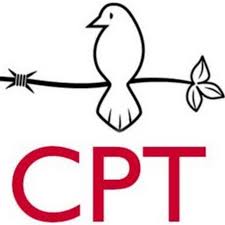Border lives: Zharawa- Displaced
In December 2007, a wave of Turkish attacks took place in the border area with Iran, resulting in large numbers of IDPs in the Suleimaniya Governorate. On January 3, 2008, a local officer in Pshdar District reported that “up to 400 families left the 34 villages” during the December 2007 attacks.
In Pshdar, Mr. Namo reported, "PKK are not in the villages…. They are in the mountains. Nobody, not Iraq, Iran, or Turkey can get to them…. [yet] the mountains were not attacked, only the villages.”
Below is a story of 120 IDP families in the mountain area of Zharawa subdistrict, Suleimaniya Governorate fleeing from bombing and subsequently being access to their properties.
A local officer said, “This area is not stable. There is often bombing from both Turkey and Iran.”
On March 13, 2008, Iran shelled the mountain area of Zharawa, which included the villages of Arkai Khwaru, Arkai Saru, Basta, Maradu, Razgai Khwaru, Razgai Saru, Shnawa, Spi Gla, Spi Iagla , and Swragla. The attack lasted for nineteen days. One hundred and thirty-two families were displaced from those villages and relocated to a valley near the town of Zharawa in the Suleimaniya governorate. The last time they had fled from home was December 2007, due to Turkish bombing. Turkey and Iran justified their military actions, claiming they were directed against the PKK and PJAK.
Residents of the villages have endured Turkish and Iranian assaults for years. The villagers designed a pattern for survival. But the pattern changed when the U.S. started sharing intelligence with Turkey, as was reported in the New York Times in late 2007: "[t]he United States has begun to share real-time intelligence with Turkey to assist in its efforts to track down separatist, Kurdish rebels hiding in Northern Iraq."
According to a local official, in December 2007 Iran and Turkey began heavy and unpredictable shelling and bombing respectively. From 2007 until the present, over 500 families from 70 different villages have been displaced. One hundred and twenty families were from Zharawa sub-district. People in the area say the last time their situation was this bad was before 1991 under the regime of Saddam Hussein.
Prde Hazwa Camp (April 2008—December 2009) and UNHCR IDP Camp Period (April 2009—Present)
CPT began visiting the IDP camp in Zharawa district on July 1, 2008. The IDPs were in Prde Hazwa until December of 2008. In April of 2009 they moved to another location between the towns of Zharawa and Sangasar, where UNHCR built an IDP camp. The second camp is referred to in this section as “UNHCR IDP Camp” or “UN Camp”.
The Prde Hazwa IDP Camp was 6 km from the town of Zharawa. The drive took 30 minutes, most of it on an unpaved road. Several kilometers out there was a high security checkpoint at the beginning of the ascent into the mountains. The camp was located in a large valley.
Prde Hazwa was built in April 2008 and accommodated 132 families. In September, a creek within the camp flooded, destroying four tents. With the onset of winter, survival in the tents became impossible.
Because they saw no chance of returning to their homes or surviving in tents, the families decided to rent houses in Zharawa. One woman told us she had two other families living with her; it was too crowded but people were not able to afford to live separately. She wished the UN camp could be finished as soon as possible.
The second camp, the “UN Camp” is located between the towns of Sangasar and Zharawa on a barren plane lacking trees and water. UNHCR, via the NGO contractor, Qandil, erected 45 tents for the 132 families there. Facing summer at the camp with no shade or electricity, overcrowding, and temperatures between 100 – 118° F. (38—48°C) in the summer, many families opted to move between town, their village, and the camp. The villagers risked taking their children back to the villages in the heat of summer, but the adults generally remained in the camp for fear of being dropped from the official IDP list.
